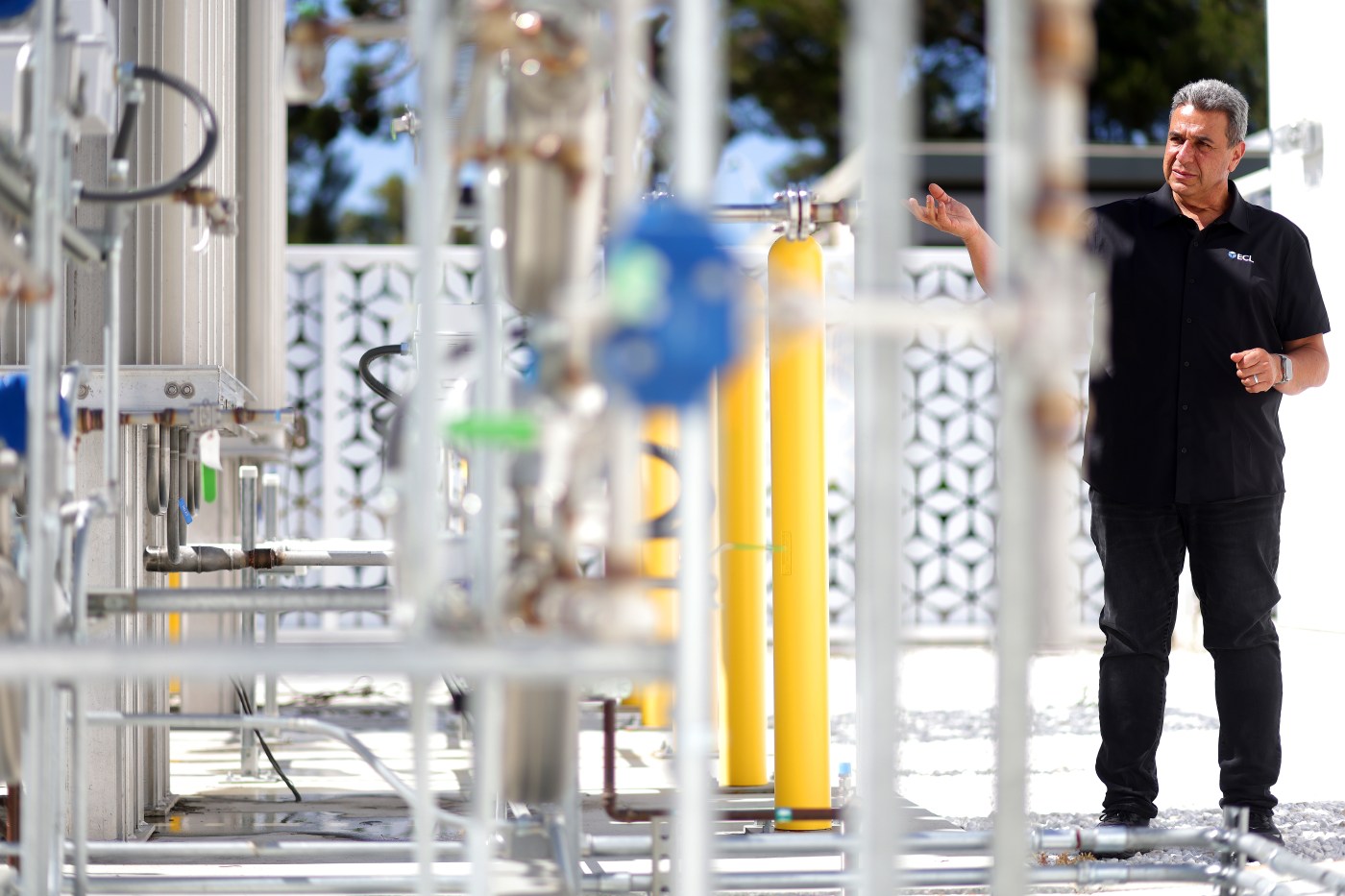As artificial intelligence fuels a surge in electricity demand, a Bay Area startup is betting on hydrogen to power the next generation of data centers — and ease their environmental burden.
Related Articles
States pass privacy laws to protect brain data collected by devices
Economic upswing sprouts on multiple fronts in downtown San Jose, report shows
SAP to buy San Francisco-based HR software firm SmartRecruiters
Reddit stock surges higher on strong advertising projections
Coinbase falls after revenue misses estimates on lower volumes
Between now and 2030, AI data centers are projected to account for half of the growth in national electricity demand, according to the International Energy Agency. That energy need is pushing utilities like PG&E to evaluate requests for 8.7 gigawatts of new electricity capacity — enough to power millions of homes.
Nearby Santa Clara, home to more than 50 data centers, has become a hotspot for data infrastructure development.
In Mountain View, one company is already offering a potential alternative to traditional grid power. Edgecloud Link (ECL), which focuses on powering AI systems, launched a hydrogen-powered data center last year with a 1.2-megawatt capacity — enough to power about 1,500 homes, the company says.
“We can scale this technology to very large scale,” Yuval Bachar, ECL founder and CEO, told this news organization. “We do multiple gigawatts of this technology based on hydrogen with zero emission.”
ECL claims it’s the first company in the world to launch such a facility, though others like Microsoft have also been experimenting with hydrogen energy for data centers.
The Mountain View company says its model addresses two major environmental challenges of data centers: power consumption and water use.
In addition to generating electricity, ECL’s hydrogen system produces about 100 to 160 gallons of water per hour, which is used to cool servers. Any excess may be shared with the surrounding community, Bachar said.
In contrast, traditional large-scale data centers can use up to 5 million gallons of water per day, according to the Environmental and Energy Study Institute. That’s equivalent to the daily water use of a town of 10,000 to 50,000 people.
Two forms of hydrogen are used at ECL’s data center.
ECL currently trucks in hydrogen from various sources, mainly in Nevada. The long-term goal, Bachar said, is to shift to green hydrogen, created on-site through electrolysis using renewable power — a process that produces zero emissions. For now, some operations may rely on blue hydrogen, which is derived from natural gas plants that utilize carbon capture technologies to reduce its footprint.
Still, challenges persist.
“We have infrastructure for natural gas that delivers to every home. We don’t have infrastructure for hydrogen,” Bachar said. “If the state or federal government builds pipelines to deliver hydrogen, then we can consume it everywhere — and that would make it cheaper.”
ECL plans to open two more hydrogen data centers in the Bay Area and two larger ones in Texas, though the company has not disclosed the exact locations.
While the concept is gaining traction, some experts remain cautious.
“There’s nothing we’ve seen before on a large scale using hydrogen — everyone’s afraid of it,” said Ahmed Banafa, a professor of interdisciplinary engineering at San Jose State University. “It could be dangerous. We don’t have enough research, even though hydrogen is more available than anything else.”
Still, Banafa said a stable, stationary data center could be a good test case.
“There are very few hydrogen-powered cars on California roads. It didn’t take off,” he said. “Maybe it’ll do better with data centers because it’s stable, controlled, and predictable.”
Banafa, who has written three books on AI and is working on a fourth focused on its environmental impact, said data centers are now consuming enough power annually to supply about 47.5 million homes — the equivalent of every household in California, Texas, Florida, and New York combined.
He supports legislation requiring AI companies to be transparent about their energy use.
“There should be a platform where they publicly share power needs and how they’ll manage it,” he said. “And there should be a cap on how much they can tap into the grid.”
In California, state legislators are considering such measures.
According to a CalMatters report, a bill by Assemblymember Rebecca Bauer-Kahan of San Ramon would require developers of large AI models and data centers to publicly disclose energy use and comply with efficiency standards. State Sen. Steve Padilla of Chula Vista has proposed two additional bills — one to create an energy rate structure specifically for data centers and another to offer tax cuts to centers that use 70% clean energy and create at least 20 jobs.
Bachar hopes ECL’s model will play a role in long-term solutions that support both industry and communities.
“Whatever decisions we make now on energy are going to stay with the technology for a long time,” he said. “We have to do the right thing to make sure we secure our kids’ future, because the AI revolution is not stopping.”





